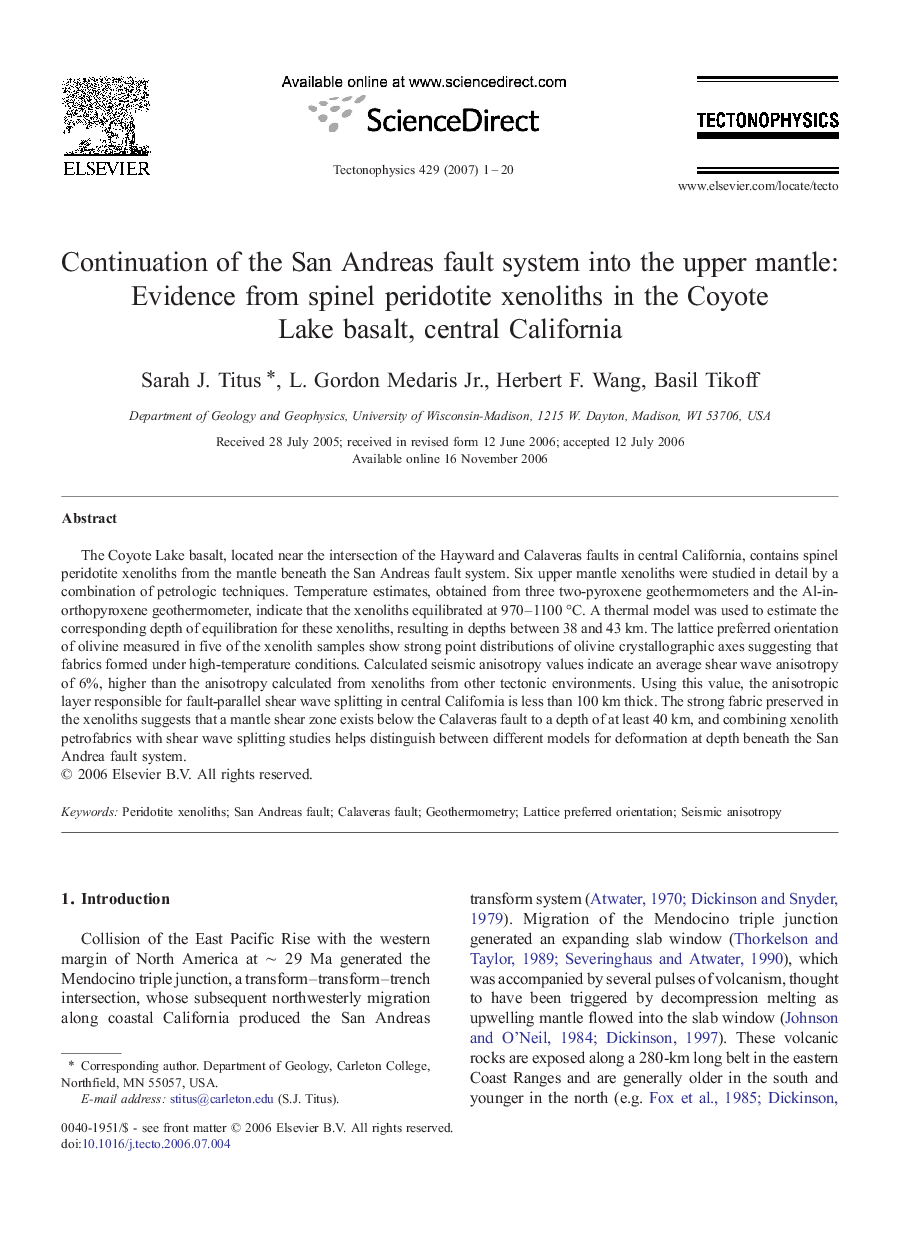| Article ID | Journal | Published Year | Pages | File Type |
|---|---|---|---|---|
| 4694990 | Tectonophysics | 2007 | 20 Pages |
The Coyote Lake basalt, located near the intersection of the Hayward and Calaveras faults in central California, contains spinel peridotite xenoliths from the mantle beneath the San Andreas fault system. Six upper mantle xenoliths were studied in detail by a combination of petrologic techniques. Temperature estimates, obtained from three two-pyroxene geothermometers and the Al-in-orthopyroxene geothermometer, indicate that the xenoliths equilibrated at 970–1100 °C. A thermal model was used to estimate the corresponding depth of equilibration for these xenoliths, resulting in depths between 38 and 43 km. The lattice preferred orientation of olivine measured in five of the xenolith samples show strong point distributions of olivine crystallographic axes suggesting that fabrics formed under high-temperature conditions. Calculated seismic anisotropy values indicate an average shear wave anisotropy of 6%, higher than the anisotropy calculated from xenoliths from other tectonic environments. Using this value, the anisotropic layer responsible for fault-parallel shear wave splitting in central California is less than 100 km thick. The strong fabric preserved in the xenoliths suggests that a mantle shear zone exists below the Calaveras fault to a depth of at least 40 km, and combining xenolith petrofabrics with shear wave splitting studies helps distinguish between different models for deformation at depth beneath the San Andrea fault system.
